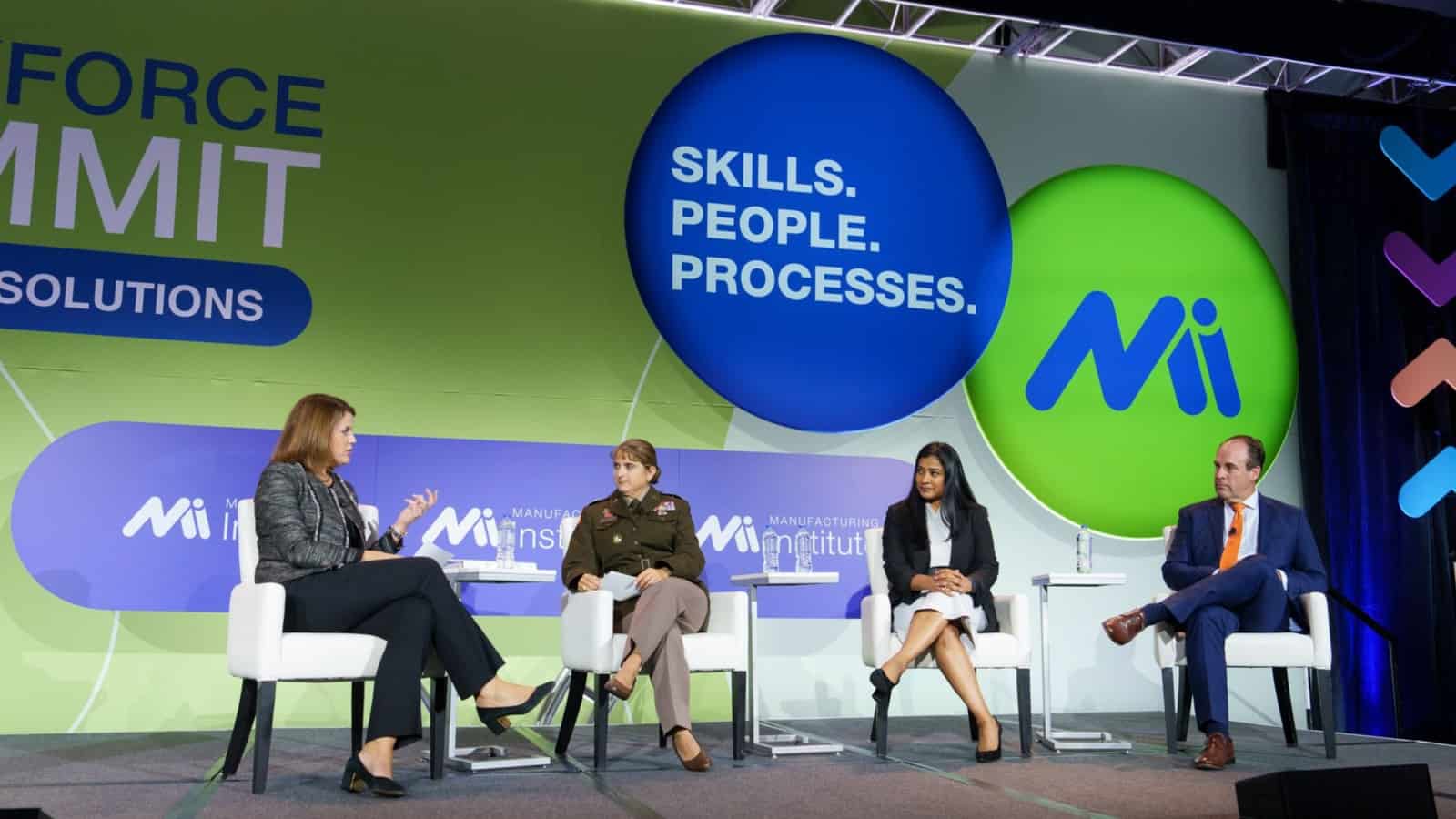Manufacturers Should Think Local When Addressing the Workforce Crisis

No man is an island, and neither is any manufacturer. Indeed, local and regional ties have never been more important to the industry’s success, as companies seek to fill hundreds of thousands of open positions and secure a talent pipeline for the next decade.
That’s why building partnerships with local organizations, schools and leaders was a key topic at the Manufacturing Institute’s 2023 Workforce Summit in October.
- As MI President and Executive Director Carolyn Lee put it, “The current state of the economy calls for new ideas for solutions…. We’ll need to build more diverse talent pipelines and connect with our partners in the workforce ecosystem.”
The problem has changed: “The workforce challenges we are seeing are not transitory; they’re structural,” emphasized MI Vice President of Workforce Solutions Gardner Carrick. “Addressing these structural challenges are going to require local, regional solutions.”
- In this case, “regional” means approximately a 40-mile radius around a facility. Manufacturers should focus on sourcing the bulk of their workforce from this immediate area, said Carrick, since it is unlikely that workers outside of that radius would be willing to commute.
- Carrick noted that manufacturers will need other organizations to help their outreach. “We need to collaborate. This is not a problem that can be solved individually.”
Which partners? Manufacturers should seek out economic development boards, education partners and community-based organizations, as well as individual leaders within their local communities.
- “With every new partnership, identify the point person and the decision-makers,” Carrick advised. “Work with them to maximize the relationship. You want to build awareness and institutional memory of your company within that organization.”
- In addition, manufacturers can seek out regional chapters of the MI’s Heroes MAKE America, Women MAKE America and FAME USA initiatives—which help members of the military community, women and others find rewarding manufacturing careers.
Connecting industries: Manufacturers can also find partners within their industry sectors and create relationships with local schools.
- In another session at the summit, MI Director of Workforce Initiatives Pooja Tripathi pointed out that “A group of employers can sponsor a noncredit pathway—which is relatively inexpensive—at a community college, which can then use it to attract the workforce manufacturers are looking for.”
- Fresno Business Council CEO Genelle Taylor Kumpe added that manufacturers could work with high school counselors to challenge perceptions of manufacturing and the need for a four-year college degree. “We’ve seen internships and other short-term exposure programs work in attracting youth to the manufacturing industry,” she noted.
- Fresno Economic Development Corporation Vice President of Workforce Development Chris Zeitz gave general guidance on approaching industry partners: “Different manufacturers and organizations have different incentives and ropes to navigate. The speed at which different sectors like manufacturing, education and economic development boards make decisions and move can also vary.”
The final word: Caterpillar Foundation President Asha Varghese emphasized the importance of seeking local solutions for workforce challenges, a key element of the foundation’s efforts to strengthen communities nationwide. As she rightly noted, “A business cannot thrive unless the community is successful.”
